FACT or Fiction: The Truth About the Blueprint


The Blueprint is complicated and there are often contradictory messages about what it is and what it isn’t. At its core, the Blueprint really can transform public education for Maryland students and educators. It took years of study, debate, and education of school, state, and local leaders to become law. It reflects many of the most successful programs of the most successful school systems in the world carefully crafted to serve the needs of our students in Maryland.
It also comes with some big changes. The Blueprint’s implementation may seem complicated and messy now, but that’s the reality of doing something big—sometimes it’s messy. Separating the facts from fiction isn’t easy when your union and school district are interpreting what’s made possible by an encompassing state law—and when some elected officials have been scapegoating the Blueprint to distract from their underfunding of local schools. We’re going to try to take the mystery out of the Blueprint.


Increasing educator pay is a key part of the Blueprint, but so is increased staffing. The Blueprint projects that 10,000 new educators will be hired, including behavioral health professionals, paraeducators, and others, allowing more time for collaboration, planning, and individualized attention for students.
The Blueprint funds the creation and expansion of career and technical education (CTE) programs and introduces opportunities earlier and to more students across all grade levels and in all communities. By 2030, the Blueprint’s goal is that 45% of high school students will achieve an industry-recognized credential before they graduate.
Visit MSDE’s Blueprint for Maryland’s Future homepage.
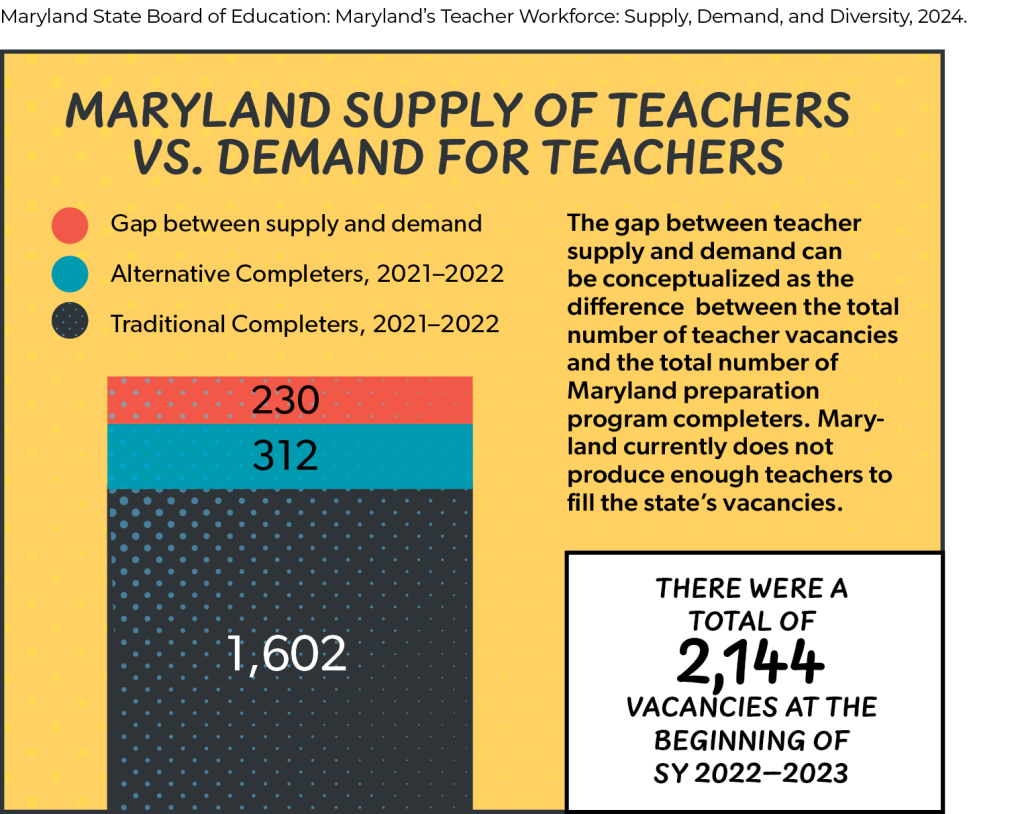
With an investment in equity, the Blueprint helps communities that have long suffered from under-investment and systemic racism with more equitable funding, including for students who receive special education services, English language learners (ELL), and schools in high-poverty communities. Struggling learners will receive early individual or small-group tutoring support. Once the Blueprint is fully implemented, per pupil funding will increase by 20% for ELL and double for special education students and more than 150 new family support and early ed centers will open across the state for even earlier interventions.
The Blueprint investment in early childhood education is additional equity-focused funding that levels the playing field for our youngest learners beginning with those in the most economically challenged communities. Thanks to the Blueprint, it’s estimated that, once phased-in, 80% of eligible children will be enrolled in a publicly funded pre-k.
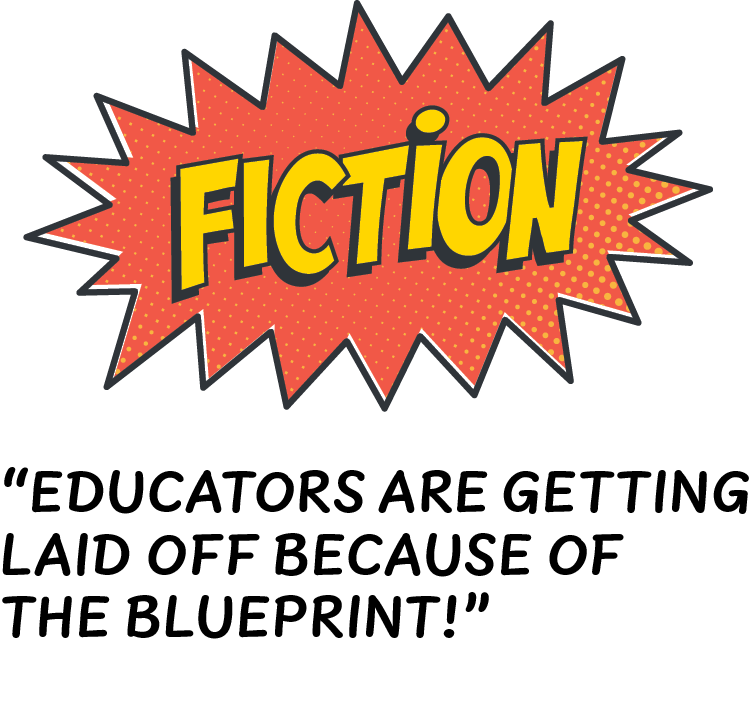
Stop us if you’ve heard this one before: sometimes county leaders trip over themselves to find any way possible to underfund our schools, use any excuse that seems mildly credible as explanation, and blame others instead of taking ownership.
Here’s the thing: since the implementation of the Blueprint began in 2019, the state has kept up its end of the bargain to fund this historic increase in support for our schools. State aid has increased 22%, or $1.5 billion, between FY19 and FY23. But during that same time period, local county funding to schools has been uneven, with some counties doing their part and others looking for every excuse not to.
Here’s the thing: since the implementation of the Blueprint began in 2019, the state has kept up its end of the bargain to fund this historic increase in support for our schools. State aid has increased 22%, or $1.5 billion, between FY19 and FY23. But during that same time period, local county funding to schools has been uneven, with some counties doing their part and others looking for every excuse not to.
What some counties are doing is a little like hearing from the mechanic that you need to fix your engine and replace your tires but only paying for new tires and then saying it’s the mechanic’s fault that your car isn’t working. The Blueprint requires new investments in a wide range of initiatives, and it also requires districts to make some systemic changes. When districts implement without imagination or collaborative input from educators, they design a false choice to cut positions in order to make their budgets balance and then blame their failures on the Blueprint.
We’ve been in uncertain fiscal times due to the post-pandemic federal funding drop-off while facing the challenge of a dire educator shortage; but given that, local boards must make sure they’re fully and appropriately funding their schools rather than looking for excuses not to.
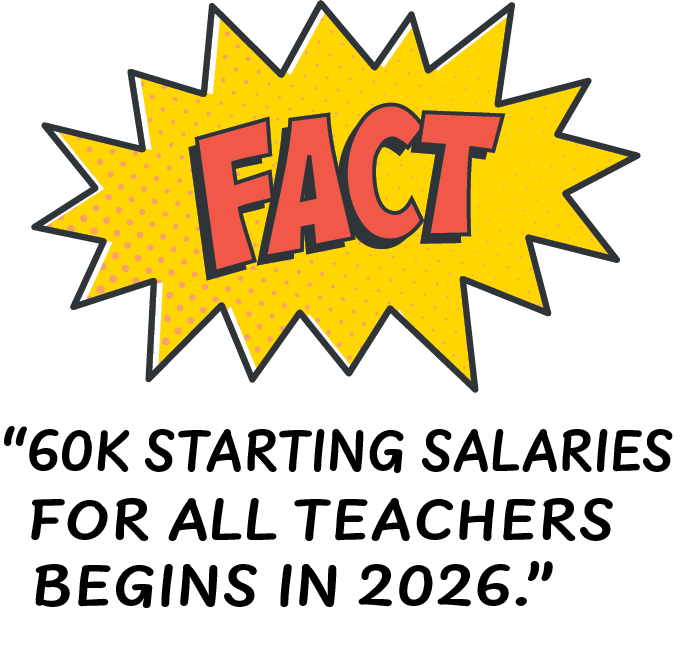
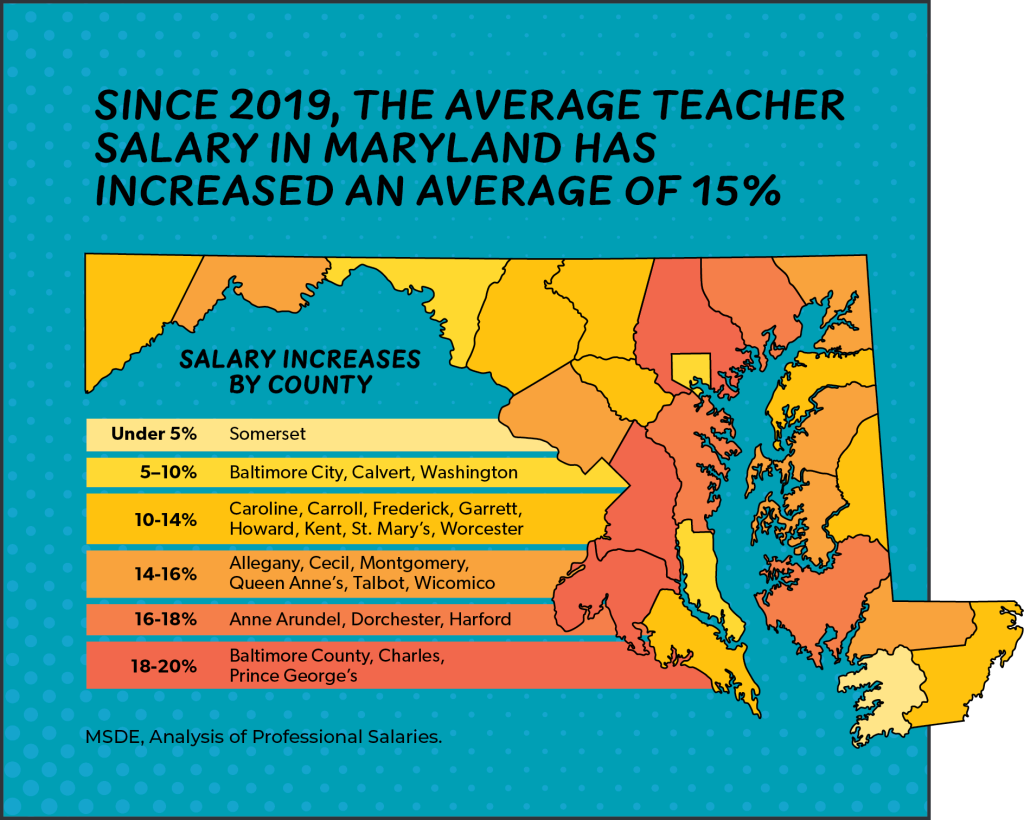
This is a big deal: the Blueprint is committed to expanding and diversifying the profession by requiring starting teacher salaries of at least $60,000—in line with comparable early-career professional compensation.
This is good news for everyone on the local salary scale—with a higher baseline, salaries increase up the scale based on local contract negotiations between the union and school system. And with incentives like those for National Board Certification— up to $17,000—educators have more pathways to career and financial growth.
In the Blueprint, potential educators can see opportunities to make more money and choose higher-level professional opportunities within the field through locally negotiated career ladders. This is on par with other professions where opportunities for job growth are built in. With a powerful union at the bargaining table in contract negotiations, educators can feel confident that the opportunities for such growth in the Blueprint are protected and implemented as intended.
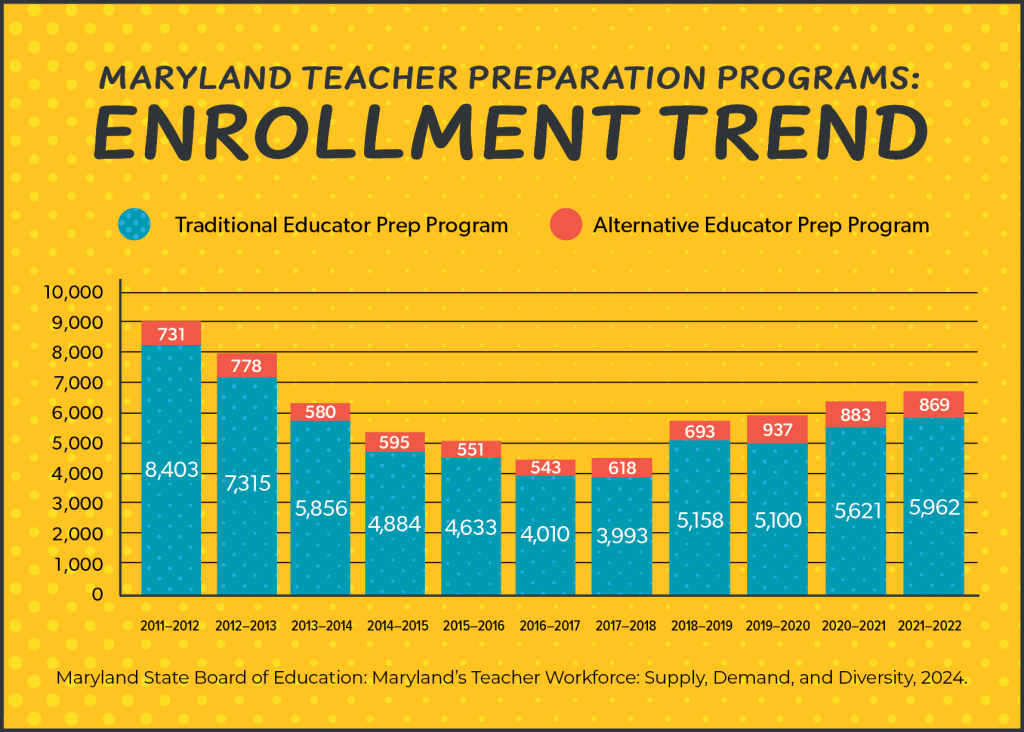
Expanded pathways to licensure are another improvement to attracting new educators. With a more competitive starting salary, fewer unrelenting and biased standardized Praxis tests in the way, more creative pathways into the classroom, and expectations of job growth with accompanying compensation, the anticipation is that more college students—and career changers—will see education as a more viable career possibility.
Check out MSEA’s new package of educator licensure explainers.

The Blueprint is all about equity, meaning that additional funding is directed to students who come from backgrounds of poverty, who receive special education services, or who are English language learners receive additional funding for extra services and support. This is nothing new— Maryland’s school funding formula (and those of many other states) has worked this way for decades.
What the Blueprint does differently is make sure this funding reaches the school level. Previously, local school systems received additional funding from the state at the system level— meaning that some of that additional funding could be redirected locally to another school, program, or central office initiative. This often created flat staffing and funding that did not account for the needs of students in particular schools.

The new model directs that equitable funding reaches down to the school level. The influx of funding from the Blueprint will ensure that an increase in per-pupil school funding is seen in every school in the state.
The end result? Some schools, particularly schools in areas of concentrated poverty, which the Blueprint takes additional steps to support, will add staffing positions and new programs at an above average or quicker rate. However, the addition of those staffing positions does not require any involuntary transfers, nor does the funding of those positions need to be at the expense of schools in wealthier neighborhoods. The Blueprint simply guarantees that the schools with the greatest level of need have the greatest level of resources and that includes staff.
Indeed, at a May State Board of Education meeting discussing this issue, Board Vice President Dr. Josh Michael noted that “Simply reassigning teachers is not going to get the job done.” He and other board members underscored that this was not the intent of the Blueprint.
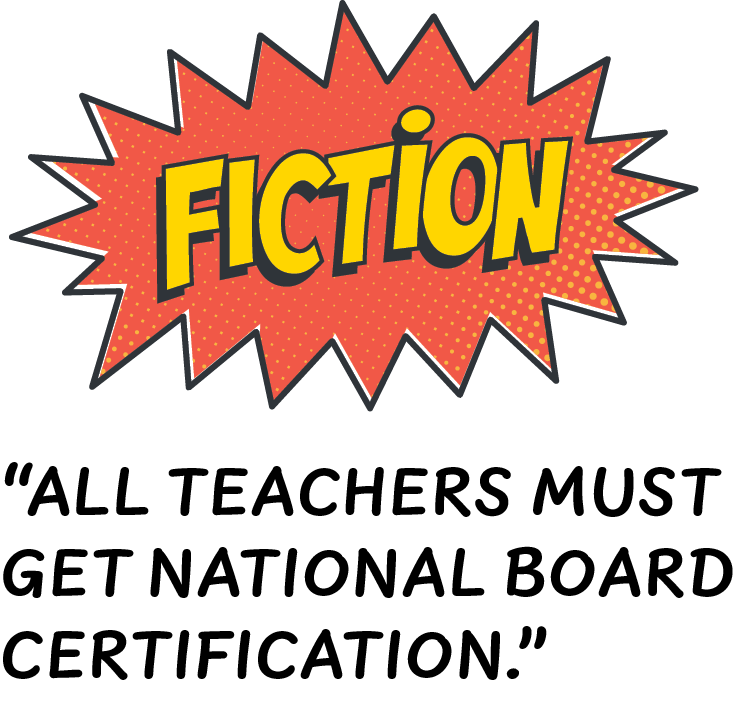
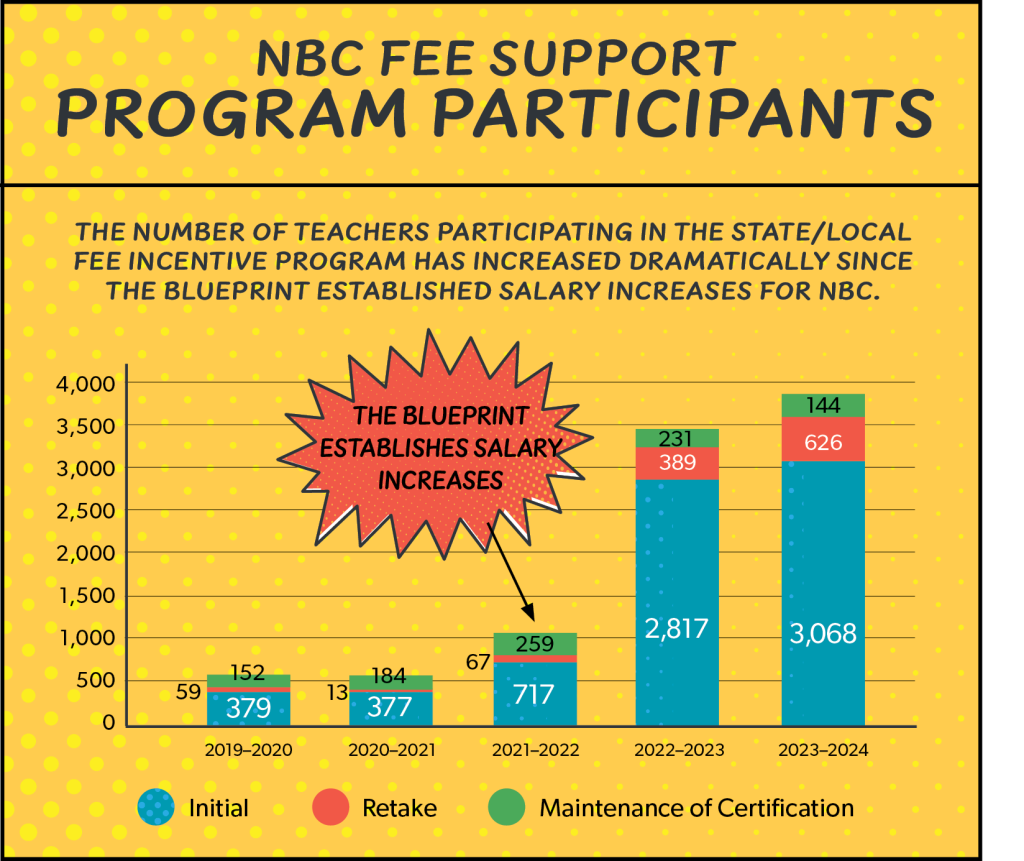
That would be a big ask and not what the Blueprint intends. While National Board Certification (NBC) is considered a valuable asset to a teacher’s portfolio, it’s not mandated by the Blueprint, but encouraged through financial incentives and movement on the career ladder.
The Blueprint provides notable additional compensation for National Board Certified Teachers (NBCTs) who are primarily responsible and accountable for teaching students in the classroom: $10,000 annually for achieving NBC and an additional $7,000 for teaching in a low-performing school. The $7,000 salary enhancement remains in place even after the school shows progress and is removed from low-performing status; however, NBCTs must maintain their NBC and remain actively teaching to continue receiving the salary boost.
That’s a pretty big incentive, but getting there may seem daunting. Luckily, there’s help to achieve NBC.
The Blueprint offers financial support for acquiring and maintaining your National Board Certification through state and local incentive programs. The initial certification cost is $1,900, divided into four components at $475 each. The Maryland State Department of Education covers two-thirds of this fee, and your local school system covers the remaining third, regardless of whether the process takes one or three years to complete. Candidates in the fee incentive program are only responsible for the annual $75 registration cost. Additionally, the fee support program covers one retake per component.

National Board Certified Teachers seeking Maintenance of Certification (MOC) also qualify for the fee incentive program. The MOC costs $450 and is similarly covered by state and local funding. Candidates are only responsible for the $75 registration cost for the MOC.
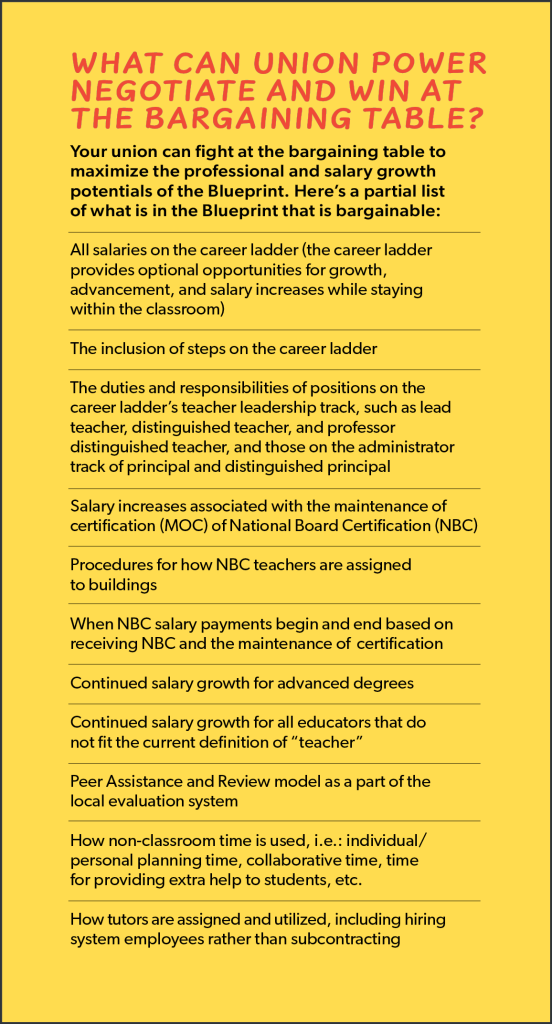
For maintenance of your NBC, incentives grow. Your original National Board Certification is for five years, with a MOC requirement every five years thereafter. Union negotiators in most school systems have, or are bargaining, a financial incentive on top of the original $10,000 required by the Blueprint. The additional MOC annual salary increase can be negotiated for a state share up to $8,000 for the first MOC, up to $7,000 for the second, and up to $6,000 for the third. This could result in an NBC-related salary increase of $31,000 in a 20-year career; $38,000 in a low-performing school on top of negotiated salary increases. These increases are all pensionable, meaning they add to the growth of your accrued retirement benefit.
For related service providers who rightly felt left out of the NBC incentive despite advanced certification from their licensing board, locals can follow the leads of counties such as Calvert and St. Mary’s. In those counties, union negotiations teams won incentives ranging from $1,500- $3,000 for school psychologists, nurses, speech/language therapists, audiologists, and other professionals who do not fall under the definition of “teacher” as defined in the career ladder.
Administrators were also left out of some NBC-related incentives, but the administrators’ local in Carroll County, for example, negotiated a $7,000 annual increase for principals leading in a low-performing school and $10,000 for all non-teacher NBC holders. And in Frederick and Harford counties, union teams fought for all certified educators, regardless of whether they meet the definition of “teacher,” to receive $5,000 and $2,000 respectively for achieving NBC. Check with your local union for newly negotiated provisions for NBC salary increases.

Despite MSEA’s early and consistent efforts to expand the scope of the Blueprint recommendations to be more inclusive, the Blueprint was largely built around teacher-specific policies rather than policies specific to support staff and the entire educator workforce. However, a key exception to that is the role that the Blueprint envisions for paraeducators in providing targeted supports for small-group instruction for reading and math. The Blueprint provides funding for the hiring of 10,000 more educators statewide, including paraeducators, to provide increased targeted support. This hiring has begun on a small scale in some places but is certainly affected by the educator shortage. As Blueprint funding increases, so should hiring for these valuable positions.

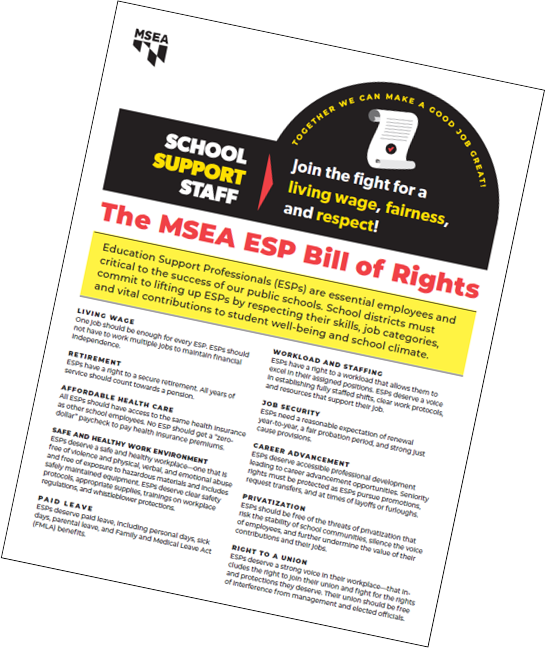
Support staff have reason to be frustrated with the lack of mandated salary increases provided in the Blueprint. Good salaries—let alone living wages—are critical to retain all current support staff in every position and to hire more ESP. While it is true that there is indeed money in the Blueprint that can go towards ESP raises, it requires strategic collective bargaining by the union to get it. That means showing up at the bargaining table with the power of the local union behind the negotiations team to deliver big wins for ESP. We have seen these salary wins in Harford and St. Mary’s counties, to name a couple, but know that the Blueprint did not do enough toward our ESP living wage goals.
Organizing for that power is exactly why members of MSEA’s ESP Organizing Committee recommended that the MSEA Board of Directors launch the ESP Bill of Rights campaign in 2022. The ESP Bill of Rights is the grounding document for a multi-year campaign—and the result of information-gathering surveys, conversations, and meetings across the state that reached thousands of support staff in every position.
Join the ESP Bill of Rights campaign for a stronger union and a better contract.
The endorsement of the ESP Bill of Rights by every one of MSEA’s support and certificated staff local unions brings the power of MSEA to the next step in the campaign—using the new MSEA ESP Bargaining Guide that aligns the power of the ESP Bill of Rights with local campaigns to support better contracts across the state. It’s the first campaign and guide of its kind for ESP and has gained national attention with grant funding from NEA and an episode in the popular podcast Stand Up with Pete Dominick.

Every educator knows that for both parents and schools, access to high quality pre-k programs is a strategy that works, but the Blueprint requirement for pre-k paraeducators/ teaching assistants to have either a child development associate (CDA) or an associate’s degree (AA) by school year 2027-2028 could have significantly disrupted this important workforce if MSEA did not take action.
It could have meant that programs across the state would lose educators with a proven track record but who lacked the time or resources to pursue the additional degree. However, this past legislative session MSEA advocated for and successfully passed House Bill 1441, sponsored by Del. Vanessa Atterbeary (D-Howard), which exempts pre-k paraeducators in public programs from the requirement if they have at least five years of experience in a publicly funded pre-k classroom by July 1, 2024. This reform honors the experience of educators and helps retention efforts, and we will continue to work with local officials to ensure funding support for those who fall outside of this exemption and still need to attain a CDA or AA.

It really does take a village and that’s exactly the spirit of community schools—a place dedicated to a culture of belonging and the success of every member of the community. A community school creates just such a village that students and families can count on, tap into, and thrive within and beyond.
We can be proud that Maryland is a national leader in identifying community schools, providing clear legislative direction, and funding a statewide community school model. While the federal government and other states are investing in expansions of community schools, no state is identifying and converting more schools to community schools at a faster rate or greater proportion than Maryland.
The services for each school are determined by a formal and required needs assessment with input from the Blueprint-funded coordinator, healthcare practitioner, administration, and a parent/teacher organization. It’s a ground-up, educator- and community-informed model for relevancy and success. There are more than 500 identified community schools across the state, including at least one in 23 of the 24 districts in Maryland; when the Blueprint is fully implemented, roughly one-third of all Maryland public schools will be identified as community schools with designated funding support.


